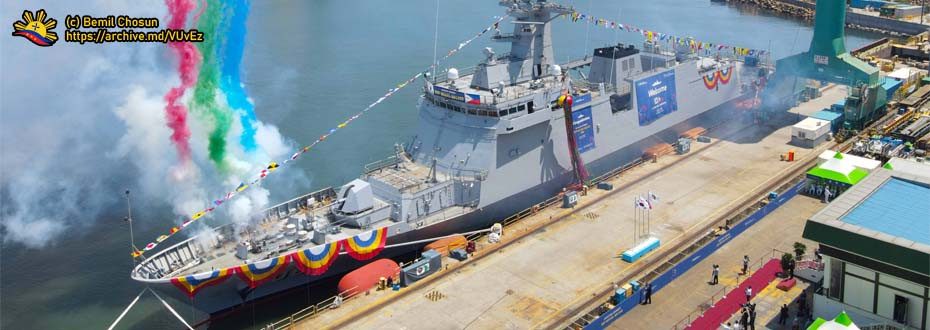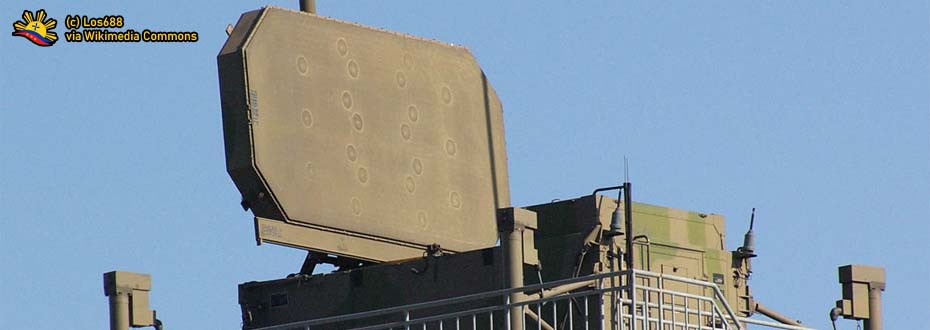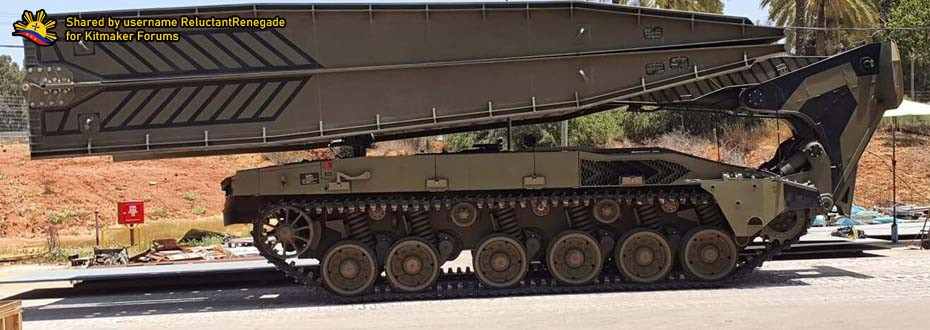The HDC-3200 Corvettes, once counted as the HDC-3100 Corvettes of the Philippine Navy's Corvette Acquisition Project, has now unveiled with additional information regarding its current development, with now involving a slip-up about the vessel's name, pennant number, and classification type, of which gives a suggestion on its departure from the project name it initially comes with.
THE SHARED OPEN-SOURCE NOTES
%20Launch%20-%20PDA.jpg) |
The launching of Miguel Malvar (06) took place on 18 June, 2024.
Image Source. |
When the first discussion arose regarding the HDC-3100 Corvettes of the HD Hyundai Heavy Industries of South Korea, as presented to the Philippine Navy's 'Corvette' Acquisition Project, the defense community clearly sees the semblance of the vessels as an improvement of the Jose Rizal-class Frigates or the HDF-2600 design, of which it often comes with a monicker such as the Jose Rizal-class Frigates Flight II, even though that it presented initially as a design for the Philippine Navy Corvette Requirements.
As initially discussed, the classification of the HDC-3100, now eventually renamed to HDC-3200 Corvettes clearly comes as such based on the acquisition project it based on as provided by the Philippine Navy, until an image shared on open-source channels, with a description showing all the badges belonging to the Philippine Navy's Offshore Combat Force or OCF, as part of the unit's 36th Founding Anniversary. The following information unveils the additional details on the HDC/HDF-3200 warships.
In this post shared by Keen Sentinel dated June 4, 2024 on X (formerly Twitter), it unveiled the new names, pennant numbers, and classification of vessels of what it seems to be two (2) brand new Philippine Navy ships, suggesting that it only points to a single acquisition project that has this description, which are the vessels produced under the 'Corvette' Acquisition Project. The new badges that have presented come with the following names: BRP Miguel Malvar (FF-06), and BRP Diego Silang (FF-07).
It highlighted three things from this post, of which, first, the names provided have originated from warships served by the Philippine Navy in the past, which then decommissioned from active duty, only with these names getting reused once more for its use in the newer upcoming vessels in the Offshore Combat Forces' fleet, second is the new pennant numbers provided, which itself is a departure from the numerical sequence of the Jose Rizal-class Frigates, and, of course, the classification of the vessels.
For this topic, the discussion will delve more into the details regarding this development, as it provides a comprehensive detail regarding the names of the vessels and the previous vessels that bear such name, along with other details regarding the change on the pennant number sequencing, the reclassification of the vessels from 'Corvettes' to 'Frigates' based on the badges provided, and this implication to the future naval acquisition projects of the Philippine Navy.
THE RECLASSIFICATION
 |
Two (2) new badges presented in the Offshore Patrol Vessel's roster
Image from Octaviano Enterprises, shared by Keen Sentinel on X. |
The first thing noticeable from the presented badges is the classification of the new vessels, bearing the 'FF' classification, based on the current naming and classification standards of the Philippine Navy. In contrast, the naming and classification for any future Philippine Navy Corvettes will come with the 'PS', which is similarly go with the Philippine Navy's Offshore Patrol Vessels or OPVs it currently possess, such as the Jacinto-class Patrol Vessels and the Del Pilar-class Patrol Vessels.
In the previous discussion done on this website regarding the difference between a Frigate and a Corvette, the discussion goes in a way that one country's corvette is another country's frigate, and there is no formal distinction on which is which, unless if this comes to the perspective limited to the classification presented by the Philippine Navy whether that ship is a Corvette or a Frigate. It is not surprising for the HDF-3200 to get reclassified as a frigate, given its tonnage and capabilities.
Speaking of tonnage and capabilities, the Jose Rizal-class Frigates do come with the tonnage of at least 2,600 tonnes as it is based from the HDF-2600 design, and its capabilities currently comes with at least four (4) C-Star missile cannisters installed onboard and a future space for an eight (8)-cell Vertical Launching System or VLS. The HDF-3200 Frigates will have sixteen (16)-cell Vertical Launching System with a space for additional VLS suites, and eight (8) C-star missile cannisters from the get go.
As the HDC-3200/HDF-3200 Frigates being heavier and more capable than the Jose Rizal-class Frigates, it might not be that surprising if it gets the 'Frigate' classification eventually, as it likely be the most capable naval assets that the Philippine Navy will get once these vessels entered active service within the Offshore Combat Force, unless otherwise the leadership within the naval service branch purchase more-capable naval assets in the future.
If the planners decide to add more HDC-3200 'Corvettes' in the future under a similarly named acquisition project in the future, it will not be surprising if this gets reclassified into a frigate down the road, if the badges provided comes at its face value as the Philippine Navy leadership at some point might change any of the details presented, from the name of the vessels to the pennant numbers and the reclassification of the vessels.
BRP MIGUEL MALVAR (FF-06)
Reusing the names for new warships upon decommissioning the old ones comes commonly not only within the Philippine Navy, but with other navies as well, as it comes in the history that the service branch reuses the name of the country's national heroes each time there is an acquisition of naval asset takes place. This is the case for the BRP Andres Bonifacio (PF-7), BRP Conrado Yap (PG-840), BRP Tarlac (LT-500), and some other examples that can get added in the list.
For the BRP Miguel Malvar, the name has once associated more on the Second World-War era PCE-848 rescue patrol craft USS Brattleboro (PCE-852), a vessel that once served in the United States Navy, then turned over to the South Vietnamese Navy until it has transferred to the Philippine Navy after the remnants of once-existed South Vietnam flee their country after the fall of Saigon to the Northern Vietnamese forces that formed what is now called the Socialist Republic of Vietnam.
The vessel, since its first entry into service during the final months of the Second World War in 1944 as the USS Brattleboro until it got decommissioned from active duty within the Philippine Navy in December 2021 as the BRP Miguel Malvar, has served at least seventy-seven (77) years, with forty-six (46) years of its serviceable life served primarily to the latter. It defined the fleet condition of the Philippine fleet, which eventually gets better with the entry of newer, more capable naval assets.
Like the successor ship BRP Miguel Malvar (FF-06), the old BRP Miguel Malvar (PS-19) was also the lead ship of its class of ex-PCE-848 rescue patrol craft, of which it compose of other vessels such as the BRP Magat Salamat (PS-20), BRP Sultan Kuldarat (PS-22), BRP Datu Marikudo (PS-23), and several others more not mentioned in this entry. Capabilities wise, there is a huge leap from the old, World War 2-era rescue patrol craft and the modern, multipurpose frigate, especially in size, endurance, and firepower.
In a backstory, its namesake, Miguel Malvar, was a Philippine revolutionary general that both fought against the Spanish and American forces during the revolution for the Philippines and the Philippine-American war that came after it.
The revolutionary skirmishes that the general have involved inflicted damage to both the colonial forces aforementioned, so much that the legacy of Miguel Malvar as a national hero found its way into the prestige of having his name used on military assets like what the navy has.
Instead, the vessel is getting its subcomponents installed onboard, with the most notable one being its Close-In Weapons System or CIWS. Apparently, the CIWS platform resembles that of the Turkish ASELSAN Gokdeniz CIWS.
As the updates of the Miguel Malvar-class Frigates in terms of subcomponents deserve its own discussion, the glimpse of what's to come for the future of the Philippine Navy's upcoming most capable warships is the promising one to date.
This comes as the next vessel after the BRP Miguel Malvar has also its name once used on a decommissioned Philippine Navy ship, but this time, it referred to what was once the most capable vessels of the fleet before the Revised AFP Modernization Program.
BRP DIEGO SILANG (FF-07)
 |
The BRP Andres Bonifacio (PF-7) stands as a sistership of BRP Diego Silang (PF-9), belonging to the once-mighty Andres Bonifacio-class Frigates.
Image Source. |
Like the BRP Miguel Malvar, the name carrying the BRP Diego Silang has also seen its usage from a previous Philippine Navy ship. Notably, its first use is with a Barnegat-class Seaplane Tender, which subsequently became the Andres Bonifacio-class Frigates of the Philippine Navy's yesteryears.
This means that the usage of the name BRP Diego Silang on the Philippine Navy's newest and most sophisticated naval asset to-day simply befits from what it was before as a dedicated Philippine Navy frigate, of which the continuous nomenclature gives a succession that symbolizes the improvement of the fleet in getting the most modern platform it deserves presently. And like the BRP Miguel Malvar, the names used have given to the newest, purpose-built ships that the Philippine Navy has to-date.
Given the figures, this means that the vessel served most of its life as a United States Coast Guard Cutter for 22 years, while it spend only four (4) years in the South Vietnamese Navy, ten (10) years in the Philippine Navy until decommissioned in 1985, and its short stint during the Second World War as a seaplane tender.
Both the names Miguel Malvar and Diego Silang used on Philippine Navy warships for a second time now, with the new frigates that are once classified as HDC-3100 Corvettes before its current designation carrying the names of Filipino revolutionaries, symbolizing the continuous resolve in securing the country's territorial and exclusive economic zone waters, along with ensuring the national security and interest of the Filipino citizenry coming as a primary and utmost priority.
UPDATES
 |
Updated infographic that reflect the specific subsystems fitted on the Miguel Malvar-class Frigates to date.
|
Since the last information has provided to the initial subcomponents of what will be the HDC-3200 Corvette design that is now re-categorized as the Miguel Malvar-class frigate on the previous article entry specifically for this discussion, additional details have now warranted for the infographic shown above to get its necessary update that reflects accordingly to the actual subsystems that the frigates received, based on the data accumulated up to the time this article has published.
First to point out is that there is finally a specific 3D AESA model and is not just simply a product from Israel Aerospace Industries or IAI, whereby the radar provided is the EL/M 2258 ALPHA S-band 3D active electronically scanned array or AESA radar, of which its target detection range is at 200 kilometers for the basic version, and 400 kilometers for the extended version. This enables the frigates to have the capability of scanning the airspace surrounding its position from incoming threats.
Still unchanged is the MBDA VL-MICA anti-air missile system, whereby vertical launch system or VLS suites and missile munitions come in tandem for this capability. The VLS system remains at sixteen (16) cells, with space for added capabilities that the Philippine Navy leadership desires to install onboard the vessels.
Another thing to highlight is both the initial and final subcomponent for the Close-In Weapons System or CIWS of the Miguel Malvar-class Frigate is the Turkish ASELSAN GOKDENIZ CIWS, of which the 35mm double-barrel secondary gun serves as a final line of defense for the vessels against upcoming threats. The GOKDENIZ is actually a CIWS variant of the Turkish Korkut self-propelled anti-aircraft gun system, which is not surprising with the platform's size and shape resembling an armored vehicle turret.
One thing to point out from the infographic provided is that while there is a space intended for the towed-array sonar system (TASS) platform for the Miguel Malvar-class frigate's anti-submarine warfare capabilities, the platform itself come as a Fitted For, but Not With or FFBNW item. Therefore, the Philippine Navy is likely to purchase this suite as a separate item upgradable to this class of warship, with acquisition plans slated under the Re-Horizoned 3 Phase of the Revised AFP Modernization Program.
With the specifications provided, the Miguel Malvar-class frigate likely count as the most capable Philippine Navy warship in terms of firepower at the time this article has published, although the leadership within the naval service branch and the Department of National Defense has plans in purchasing more-capable naval assets under the Re-Horizon 3 phase, although it remains to see as to the outcome of the plans and programs, along with how does it contribute to the Philippine Navy's fleet improvement process.
HULL NUMBER SEQUENCING
%20-%20PDA.jpg) |
Here is an image of the BRP Miguel Malvar (FF-06) frigate in a fitting-out process.
Image Courtesy of LA Bernardino, through image source. |
Relating once again to the development of the lead ship of the class, which is BRP Miguel Malvar (FF-06), the image provided above shows the frigate now in a fitting-out process, a sign that it has already launched in the water without the public informed about this significant milestone of the Philippine Navy's "Corvette" Acquisition Project. As this development has mentioned, this sub-topic will deal more with the interesting hull number sequencing of the Miguel Malvar-class Frigates.
As depicted by the presented badges intended to the anniversary of the Philippine Navy's Offshore Combat Force or OCF, the Miguel Malvar-class Frigates will follow the hull number sequencing of FF-06 for the BRP Miguel Malvar and FF-07 for the BRP Diego Silang, a clear departure from the continuity of hull number sequencing started by the Jose Rizal-class Frigates. In context, the BRP Jose Rizal bears the hull number FF-150, followed by BRP Antonio Luna with its hull number FF-151.
The last time that this numerical sequencing has used by the Philippine Navy was with the ex-Barnegat class that became the Andres Bonifacio-class Frigates, with the lead ship BRP Andres Bonifacio bearing the hull number classification of PF-7, which continued until the BRP Francisco Dagohoy that bearing the hull number classification of PF-10. This might come as a sign that the Philippine Navy regards the Miguel Malvar-class Frigates in a manner it once regarded the Andres Bonifacio-class before it.
With the Miguel Malvar-class Frigates being more sophisticated than the Jose Rizal-class Frigates that come before it, there is a hope and an idea that at least four (4) more similarly built frigates get into the Philippine Navy's consideration, as this will comply with the naval service branch's rule of three principles.
This principle encompasses the idea that one ship is in maintenance, the other ship returning from operations, and the third ship from port is preparing to conduct its mission-related operations.
As the classification of hull number sequence is clear for the Miguel Malvar-class Frigates, there is a sense in its premise that the Philippine Navy will regard it as the most sophisticated, general-purpose naval asset that the naval service branch have, as it was when the Andres Bonifacio-class Frigates were the largest and advanced Philippine Navy combatant of its time. And with its sophistication, it deserves to get added with desired numbers that ensure full maintenance and operational status it serves to the fleet.
ENDING NOTE
 |
The HDC/HDF-3200 design.
From Wikimedia Commons. |
The Philippine Navy is now inching closer into having its newest, most capable vessel in its fleet yet entering the active duty within the Offshore Combat Force, as the service branch now on its way into receiving newly built vessels such as the Miguel Malvar-class frigates produced by South Korea's HD Hyundai Heavy Industries. Going further, most of its subcomponents come as revolutionary, as the Philippine Navy will get its hands on the vessel's sophisticated systems for the first time.
As the design of the Miguel Malvar-class frigates resembled that of the Jose Rizal-class frigates now serving the Philippine Navy fleet, the vessels, being HDC-3200 in HD Hyundai Heavy Industries' product lineup, come as an improvement over the former, of which it comes as not surprising given that the Jose Rizal-class frigate itself is the end-product of the South Korean shipbuilder's HDF-2600 design, with improvements introduced into what the newest vessels the Philippine Navy has to date.
After the initial reports come out, it came at the confusion of some people regarding the classification of the HDC-3200 Corvettes, of which this originally comes as the Corvette Acquisition Project of the Philippine Navy, now bearing the FF designation wherein it counts as a frigate based on the service branch's own naming classification standards. Technicalities aside, as there is a blurry definition of what defines the two, the FF designation provided is clear in how the Philippine Navy categorizes the vessels.
Now that it comes clearer that the new Philippine Navy frigates come with the names BRP Miguel Malvar (FF-06) and BRP Diego Silang (FF-07), it might come as a trend that names from decommissioned vessels likely getting reinstated on the new, upcoming vessels that the naval service branch has in its plans, as the old World War 2-era vessels that the Philippine Navy once have paved the way for the fleet to secure new naval assets, hoping that additional Miguel Malvar-class frigate gets on the planning.
Ending this discussion at the foregoing, the urgent concerns in the country's territorial and exclusive economic zone waters might help provide additional justification not only for the Philippine Navy but also for the other branches of the Armed Forces of the Philippines, to get the plans rolling as the Re-Horizoned 3 phase of the modernization program provides that opportunity to get the more-capable military hardware that each of the branches deserves to get. Si vis pacem, para bellum.




















%20Launch%20-%20PDA.jpg)




%20-%20PDA.jpg)





_left_front_view_at_Camp_Shimoshizu_April_29,_2018_03%20-%20PDA.jpg)




